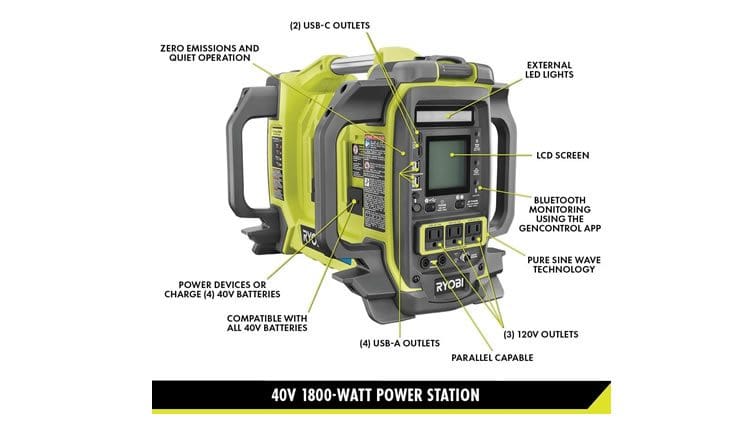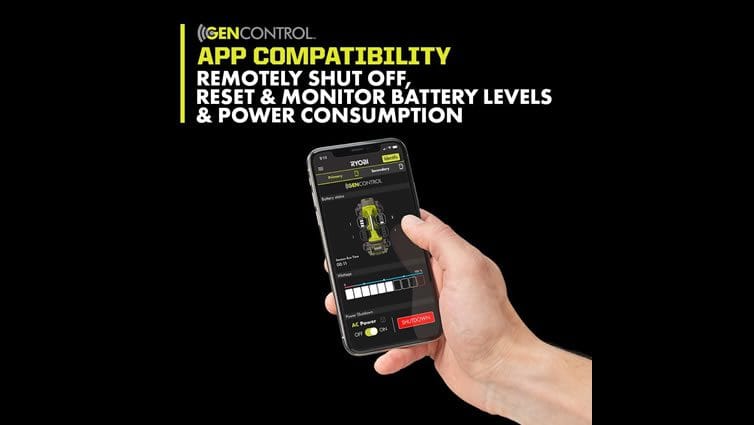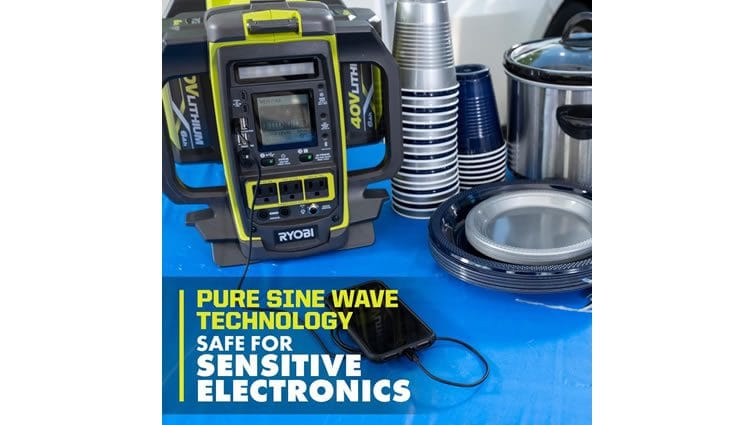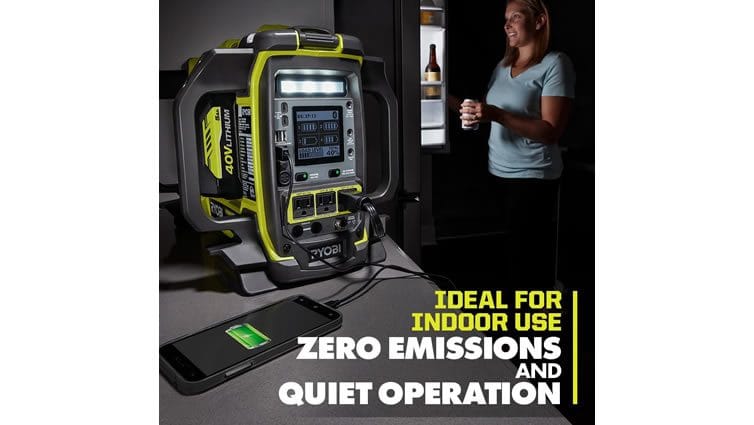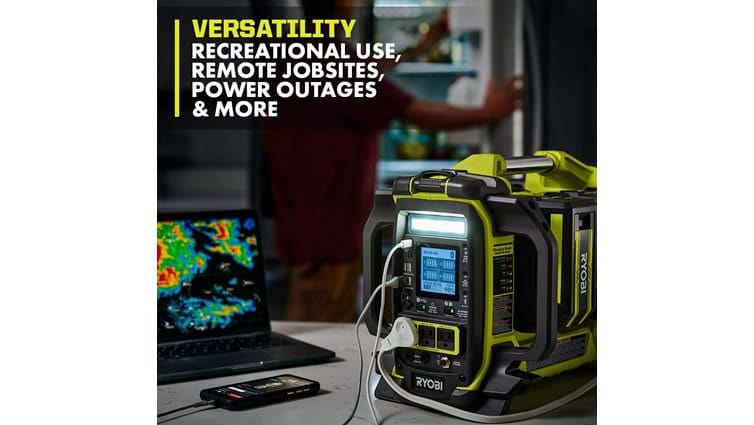Ryobi Generator Overview
Ryobi Generator has gained a solid reputation among homeowners and outdoor enthusiasts alike for its reliability and performance. Whether you need backup power during a sudden outage or an energy source for your weekend camping adventures, Ryobi offers a variety of generators designed to meet your specific needs. With a focus on user-friendly features, these generators are engineered to be easy to operate, even for those who may be new to generator use. You’ll find yourself prepared for anything, whether it’s running essential appliances during a storm or powering tools at a job site.
One of the standout features of the Ryobi Generator is its innovative design, which blends power with convenience. Many models incorporate advanced technology for improved fuel efficiency and reduced noise levels, ensuring you get the most out of each tank without disturbing your surroundings. Lightweight and portable, Ryobi generators make it easy to transport power wherever you go. This blend of practicality and performance not only enhances your outdoor experiences but also provides the peace of mind that comes with knowing you have a reliable power source at your fingertips. So, whether you’re enjoying a weekend getaway or facing unexpected power cuts at home, the Ryobi Generator proves to be an invaluable companion.
Getting Started with Your Ryobi Generator
Owning a Ryobi Generator is a game-changer for those who need portable power. Whether you’re preparing for an outdoor adventure or just want backup during a power outage, the Ryobi Generator makes life easier. But how do you get started? Let’s dive into the essential steps to help you hit the ground running!
Unboxing Your Ryobi Generator
First things first: let’s unbox your new Ryobi Generator! Carefully open the box, ensuring you keep all the packing materials handy in case you need to return it. As you take out the generator, check for any signs of damage. If everything looks good, you can start exploring its features. Familiarize yourself with the control panel, outlets, and safety features. Take a moment to appreciate its compact design; this little powerhouse is designed for easy transport and storage.
Understanding the Control Panel
The control panel is where all the magic happens. It may seem overwhelming at first, but don’t worry! The Ryobi Generator is user-friendly, making it easy to understand. You’ll see various buttons, switches, and outlets. The main power switch turns the generator on and off, while the fuel gauge lets you know how much gas you have left.
Make sure to familiarize yourself with the circuit breakers and overload indicators, as these are essential for safety. Reading the owner’s manual is a must—it includes helpful diagrams and troubleshooting tips. Knowing how to operate the control panel will boost your confidence when you need to use your generator.
Fueling Your Generator
Now that you’re familiar with the control panel, it’s time to fuel your Ryobi Generator. It’s essential to use the right type of fuel to ensure smooth operation. Generally, you should use unleaded gasoline with an octane rating of 87 or higher. Avoid using old or contaminated fuel, as this can lead to engine issues.
Before you fuel up, make sure the generator is turned off and cool to the touch. Open the fuel cap carefully and use a funnel to prevent spills. Fill the tank until it’s about 90% full to allow for expansion. After refueling, securely close the fuel cap. Now you’re all set to get your generator running!
Starting Your Ryobi Generator
Starting your Ryobi Generator is a straightforward process. Make sure the generator is on a flat surface, away from flammable materials. Check that all switches are in the “off” position, then follow these steps:
- Turn the fuel valve to the “on” position.
- Move the choke lever to the “closed” position for a cold start.
- Flip the main power switch to the “on” position.
- Pull the recoil starter gently until you feel resistance, then pull firmly.
If everything goes smoothly, your generator should roar to life! If it doesn’t start on the first try, don’t worry. Simply repeat the process, adjusting the choke as needed.
Safety First!
Safety is key when using your Ryobi Generator. Always operate it in a well-ventilated area to avoid carbon monoxide buildup. This means using it outdoors, away from windows and doors. If you’re powering appliances, ensure they are in good condition and suitable for use with a generator.
Never overload your generator by plugging in too many devices. Check the wattage requirements of your appliances, and remember that the Ryobi has a maximum output to consider. Following these safety precautions ensures you get the best performance without compromising your safety.
Conclusion: Enjoy Your Portable Power!
Congratulations! You’re now ready to enjoy the benefits of your Ryobi Generator. Whether you’re camping in the woods, hosting a backyard party, or facing an unexpected power outage, this generator has your back. With the knowledge you’ve gained about unboxing, fueling, starting, and operating your generator safely, you can confidently tackle any power needs.
So, go ahead and fire up that generator. Enjoy the convenience of having reliable power wherever you go. Happy powering!
Understanding Power Ratings and Output
When it comes to choosing a Ryobi Generator, understanding power ratings is crucial. Power ratings tell you how much electricity your generator can produce. This knowledge helps you choose the right generator for your needs. Let’s dive into the details and make sense of all those numbers!
The Basics of Power Ratings
Power ratings typically come in two forms: starting watts and running watts. Starting watts refer to the amount of power needed to kickstart appliances. Running watts indicate the amount of power needed to keep them operating. Understanding these terms helps you estimate how much power you need for your devices.
For instance, a refrigerator might require 1,500 starting watts but only 800 running watts. If you want to run your refrigerator and a few lights, you must add up their running watts. This way, you can avoid overloading your Ryobi Generator and ensure everything runs smoothly.
Why Power Ratings Matter
Knowing the power ratings of your Ryobi Generator helps you prioritize your needs. If you plan to power multiple devices at once, you’ll want to ensure your generator can handle the load. For example, if you’re camping and need to charge devices and run a small fan, understanding wattage will help you avoid surprises.
Using a generator that doesn’t provide enough power can cause issues. Overloading your generator might trip the circuit breaker or damage your appliances. You don’t want to be left in the dark or without a cold drink during a summer trip! So, before you venture out, familiarize yourself with your generator’s power ratings.
How to Calculate Your Power Needs
Calculating your power needs is simple and fun! Start by listing all the appliances and devices you want to power. Write down their wattage, which you can usually find on the label or in the manual. If you’re unsure, a quick online search can help!
Once you have your list, add up the running watts for all devices. If you’re using multiple devices that require starting watts, remember to add those as well. This total will give you a clear idea of the power your Ryobi Generator needs to provide. By doing this math, you’ll be prepared for any situation.
Using Your Generator Efficiently
To make the most out of your Ryobi Generator, you should use it efficiently. This means being mindful of how much power you’re drawing. If you only need to power a couple of small devices, don’t plug in everything at once. Instead, power up one device at a time, especially if it has a high starting watt requirement.
You can also consider investing in energy-efficient appliances. Energy-efficient devices often require less power to operate, allowing you to do more with your generator. This way, you can enjoy your time outdoors without constantly worrying about your power supply.
Understanding Surge Protection
Many Ryobi Generators come equipped with surge protection features. This means they can handle the extra wattage required to start certain appliances without damaging them. However, it’s essential to understand how surge protection works and its limits.
Surge protection is like a safety net for your appliances. It helps prevent damage caused by sudden spikes in power. While this feature is beneficial, always stay within the generator’s rated capacity. Overloading the generator can still cause issues, even with surge protection in place.
Power Ratings: Your New Best Friend
Understanding power ratings and output is like having a trusty guide on your generator journey. By familiarizing yourself with starting and running watts, calculating your power needs, and using your generator efficiently, you can enjoy the peace of mind that comes with reliable power.
Next time you fire up your Ryobi Generator, you’ll feel confident knowing exactly what it can handle. Whether you’re camping, tailgating, or simply preparing for a power outage, being informed about your generator’s capabilities will enhance your experience. So, go ahead and enjoy the freedom of portable power, and remember: knowledge is power!
Power Up with Confidence
In summary, understanding power ratings and output helps you maximize your Ryobi Generator’s potential. With the right knowledge, you can make informed decisions, ensuring you have a reliable power source when you need it most. Enjoy your adventures, and remember to respect the power of your generator. Happy powering!


